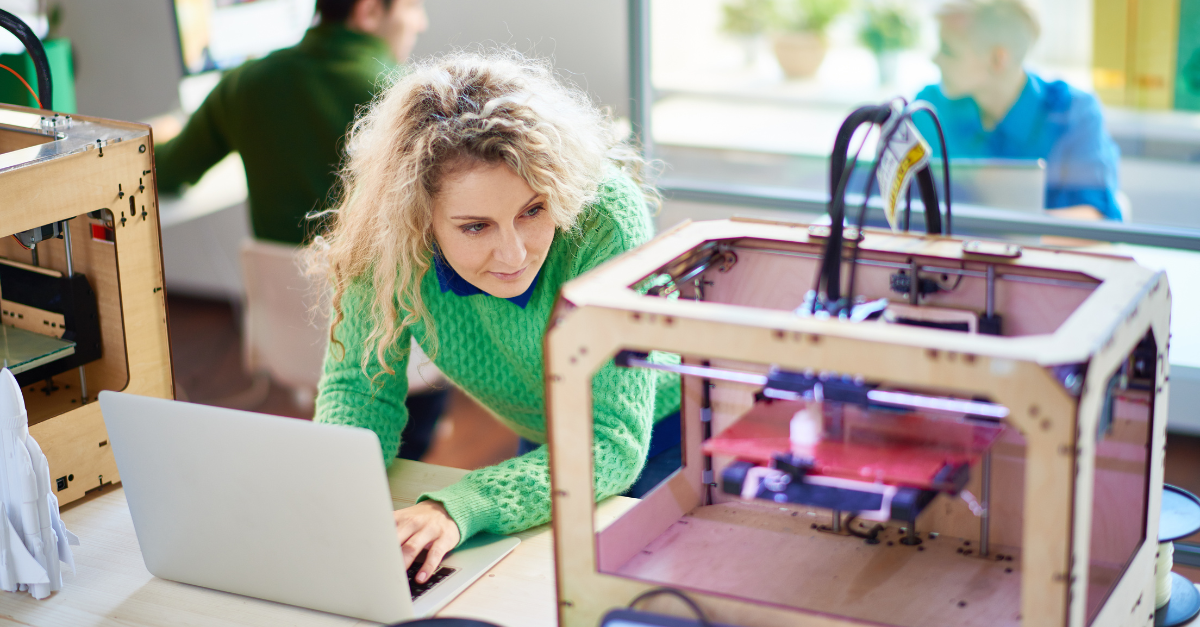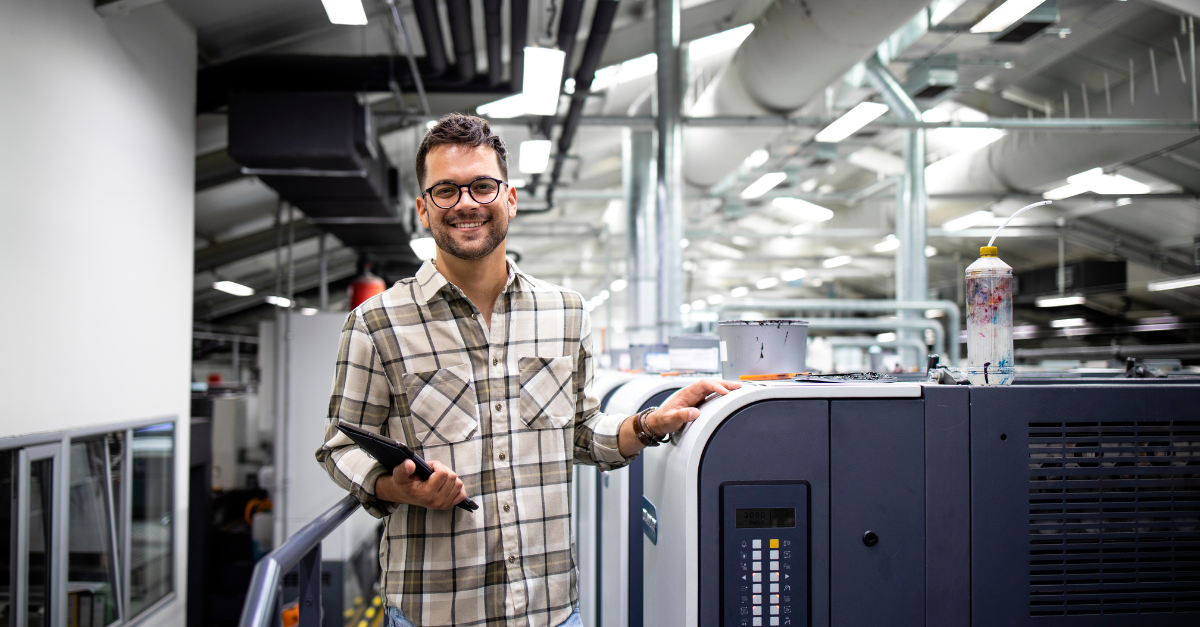Understanding the Role of 3D Printing Engineers: A Comprehensive Guide
Welcome to the fascinating world of 3D printing, also known as additive manufacturing. In recent years, this innovative technology has revolutionised the field of engineering, offering endless possibilities and transforming the way we design and produce objects.
At its core, 3D printing involves creating three-dimensional objects by layering materials based on a digital model. This process allows for intricate designs and complex geometries that were previously impossible to achieve through traditional manufacturing methods.
The role of 3D printing engineers has become increasingly important in this evolving landscape. These skilled professionals are responsible for designing and optimising models for 3D printing, ensuring that they are structurally sound and meet the desired specifications. They possess a deep understanding of materials, processes, and software tools necessary to bring ideas to life using this technology.
The impact of 3D printing on engineering cannot be overstated. It has opened up new avenues for innovation across various industries, including aerospace, automotive, healthcare, and architecture. With its ability to create prototypes quickly and cost-effectively, engineers can iterate designs more efficiently and bring products to market faster than ever before.
Furthermore, 3D printing enables customisation on a scale previously unimaginable. From personalised medical implants tailored to an individual's anatomy to customised parts for industrial machinery, this technology offers unparalleled flexibility in meeting specific needs.
In this blog, we will delve deeper into the world of 3D printing and explore the skillset and qualifications you need to be a successful 3D Printing Engineer.
The Skillset and Qualifications Required to Become a 3D Printing Engineer
To become a 3D printing engineer, there are specific skillsets and qualifications that are essential in order to excel in this field.
First and foremost, a strong foundation in engineering is crucial. This includes knowledge of mechanical engineering principles, materials science, and design principles. Understanding how different materials interact and behave during the 3D printing process is key to producing high-quality prints.
Proficiency in computer-aided design (CAD) software is also a must-have skill for 3D printing engineers. CAD software allows engineers to create detailed digital models of objects that can be printed using additive manufacturing techniques. Familiarity with various CAD programs such as SolidWorks or AutoCAD is highly desirable.
In terms of qualifications, a bachelor's degree in engineering or a related field is typically required for entry-level positions as a 3D printing engineer. Some universities even offer specialised programs or certifications specifically focused on additive manufacturing or 3D printing technology.
Continued education and staying up-to-date with the latest advancements in additive manufacturing is also important for success as a 3D printing engineer. Attending workshops, conferences, and pursuing additional certifications can help professionals stay ahead of the curve in this rapidly evolving field.
Overall, becoming a successful 3D printing engineer requires a combination of technical skills, educational qualifications, and an eagerness to continuously learn and adapt to new technologies within the realm of additive manufacturing.
a. Proficiency in CAD Software and Design Principles
Proficiency in CAD software and understanding design principles are essential skills for anyone involved in 3D printing and computer-aided design. CAD software, short for computer-aided design software, plays a crucial role in creating precise and detailed designs that can be translated into physical objects through 3D printing.
CAD software allows designers to create, modify, analyse, and optimise their designs digitally before they are printed. It offers a wide range of tools and features that enable users to accurately model complex shapes, assemble components, simulate real-world conditions, and perform various calculations.
To effectively utilise CAD software for 3D printing purposes, it is important to have a solid grasp of design principles specific to this technology. These principles include considerations such as designing for additive manufacturing processes, optimising geometries for strength and functionality, minimising support structures or post-processing requirements, ensuring proper tolerances and clearances, and maximising material efficiency.
Proficiency in CAD software enables designers to bring their creative ideas to life with precision while adhering to these design principles. It empowers them to iterate quickly on their designs, make modifications on the fly, simulate different scenarios before production, and ultimately produce high-quality 3D-printed objects.
Whether you are an engineer working on prototypes or a hobbyist exploring the world of 3D printing, developing proficiency in CAD software along with a solid understanding of design principles will significantly enhance your ability to create successful designs that meet your objectives efficiently.

b. Knowledge of Different Materials and Their Properties for Optimal Printing Results
When it comes to 3D printing, having knowledge of different materials and their properties is crucial for achieving optimal printing results. The choice of materials used in additive manufacturing can greatly impact the quality, durability, and functionality of the final printed object.
Each material used in 3D printing has its own unique set of properties that must be considered when selecting the appropriate material for a print job. These properties include factors such as strength, flexibility, heat resistance, chemical resistance, and appearance.
Understanding the properties of different materials allows print professionals to make informed decisions about which material is best suited for a specific application. For example, if a part requires high strength and durability, materials like nylon or carbon fiber reinforced filaments may be more suitable. On the other hand, if flexibility is important, thermoplastic elastomers (TPE) or flexible resins might be preferred.
By selecting the right materials based on their properties, 3D printing enthusiasts can ensure that their printed objects meet the desired specifications and perform optimally in their intended applications. This knowledge also helps avoid potential issues such as warping or delamination during the printing process.
In conclusion, having a deep understanding of different materials and their properties is essential for achieving optimal results in 3D printing. By carefully selecting materials based on their specific characteristics, print professionals can create high-quality printed objects that meet the requirements of various industries and applications.
c. Understanding the Various Types of 3D Printers and Their Applications
When it comes to 3D printing, there are various types of printers available in the market, each with its own unique capabilities and applications. Understanding these different types of 3D printers is crucial for engineers and professionals working on engineering projects.
One common type of 3D printer is the Fused Deposition Modeling (FDM) printer. This type of printer works by heating and extruding a filament material, such as plastic, layer by layer to create a three-dimensional object. FDM printers are widely used in engineering projects for prototyping, creating functional parts, and even manufacturing end-use products.
Another type of 3D printer is the Stereolithography (SLA) printer. SLA printers use a process called photo-polymerisation to create objects. A laser or UV light source solidifies liquid resin layer by layer to form the desired shape. SLA printers are known for their high resolution and are often used in applications where intricate details and smooth surface finishes are required.
Selective Laser Sintering (SLS) printers utilise a laser to selectively fuse powdered materials together to create objects. This type of printer is commonly used in engineering projects where durable parts with complex geometries need to be produced.
Other types of 3D printers include Digital Light Processing (DLP) printers, which use digital light projection technology similar to SLA but with faster print speeds, and Metal 3D Printers that can produce metal parts using various techniques like powder bed fusion or directed energy deposition.
The applications of these different types of 3D printers in engineering projects are vast. From rapid prototyping and functional testing to creating customised components and even producing end-use products directly on-demand, engineers can leverage the capabilities of these printers to streamline their design processes and bring innovative ideas to life.
Understanding the strengths and limitations of each type of 3D printer allows engineers to choose the most suitable technology for their specific project requirements, ensuring efficient and successful outcomes.
d. Troubleshooting and Maintenance Skills to Ensure Smooth Operation of Printers
To ensure the smooth operation of printers, it is essential to possess the necessary maintenance skills and troubleshooting knowledge. By acquiring these skills, individuals can effectively address common issues that may arise with printers, particularly 3D printers.
Maintenance skills for printers involve regular cleaning and upkeep to prevent clogging or damage to the printer components. This includes tasks such as cleaning print heads, removing debris from paper trays, and ensuring proper alignment of cartridges or filaments. Additionally, understanding how to calibrate the printer's settings and perform firmware updates can also contribute to optimal performance.
Troubleshooting common issues in 3D printers requires a systematic approach. It is crucial to identify potential problems such as filament jams, uneven extrusion, or layer shifting. By understanding the printer's mechanics and being familiar with its software interface, individuals can diagnose these issues and take appropriate corrective measures.
Furthermore, knowledge of troubleshooting techniques specific to 3D printing technology is vital. This may involve adjusting print settings for different materials or optimising bed adhesion for better print quality. Familiarity with slicer software and its various parameters can also aid in resolving printing problems effectively.
By honing maintenance skills and troubleshooting knowledge for printers, individuals can ensure a smooth operation of their devices while minimising downtime caused by technical issues. Regular maintenance practices combined with efficient troubleshooting techniques are key to maximising printer performance and achieving consistent high-quality prints.
About 3ecruit
3D printing has come a long way since its inception, and it doesn't look like it will be slowing down any time soon. As the technology continues to improve and become more accessible, we can expect more industries to adopt this innovative method of manufacturing. It's exciting times ahead!
If you are looking to hire, looking for the next step in your 3D printing career, or looking to enter this exciting sector, you've come to the right place. Get in touch with our team today and let's start your 3ecruit journey!











